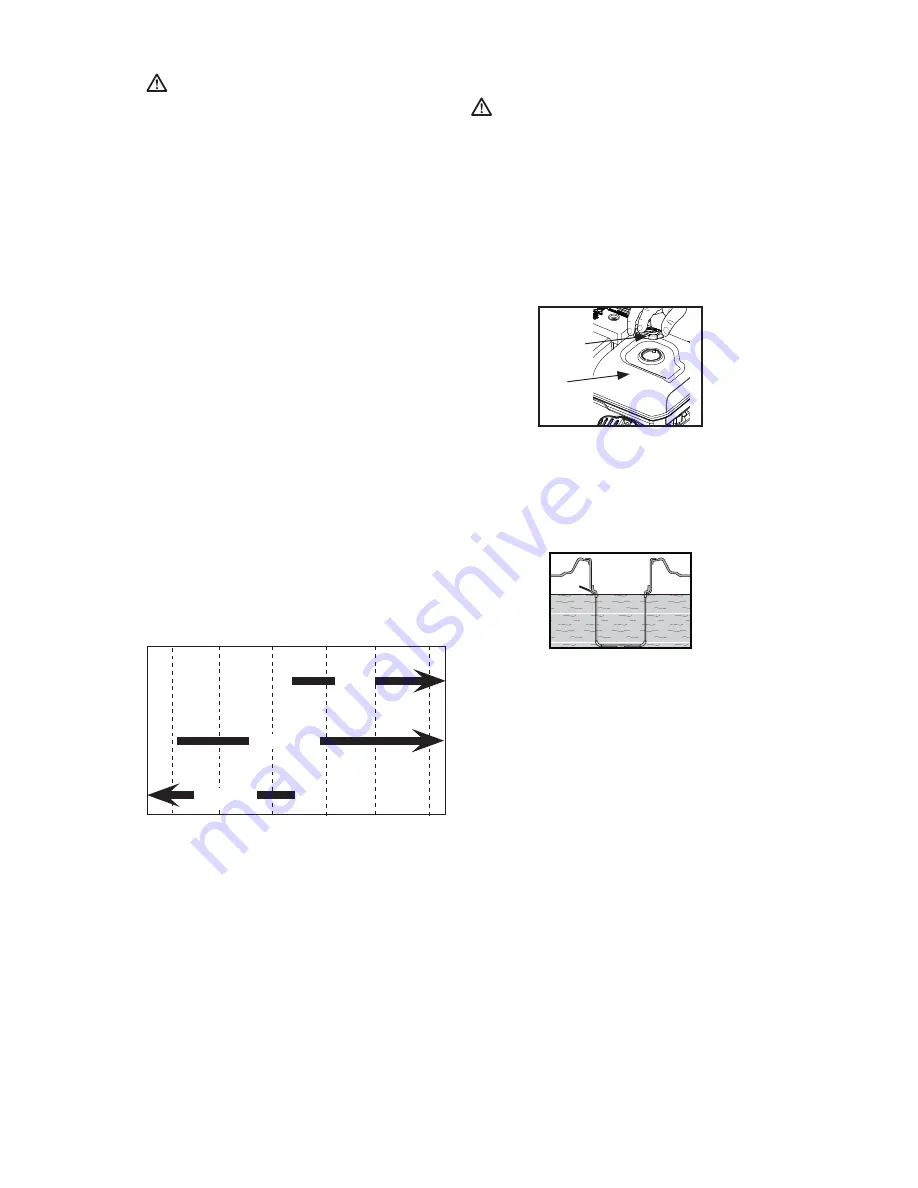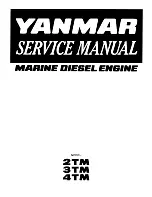
8- ENG
N003333
WARNING:
Do not operate this
unit until you read and understand this
instruction manual as well as the prod-
uct instruction manual for safety, oper-
ation and maintenance instructions.
This engine is only for use in Black &
Decker approved applications. If used
in unapproved applications, Black &
Decker is not responsible for repairs or
damage and the warranty is void. Call
Bl
ack & Decker 1-800-544-6986 for
more information.
To mount engine correctly, refer to
set-up instructions in shop manual.
CAUTION:
The engine
IS NOT
filled
with oil from the factory. Oil must be
added to the engine before operating
or damage to engine may occur.
Oil Recommendations
SAE 10W-30 is recommended for
general use. Refer to the Viscosity-
Ambient Temperature Chart for
recommended oil within your
local area’s average temperature
range.
NOTE:
Synthetic oil is NOT
recommended.
˚F
-20 0 20 40 60 80 100
˚C
-28.8 -17.7 -6.6 4.4 15.5 26.6 37.7
5W-30
10W-30
30
Viscosity-Ambient
Temperature Chart
To Add Oil (Fig. 1)
1. Refer to Viscosity-Ambient
Temperature Chart above for
correct viscosity.
2. Remove dipstick (C).
3. Slowly add recommended oil,
see specifications for oil capacity.
NOTE:
If the oil is added too
quickly, it will overflow and appear
to be full.
See
To Check Oil
under
Maintenance
for instructions.
To Add Fuel
WARNING:
Risk of explosion
or fire. Gasoline vapor is highly
flammable. Refuel outdoors only in
well-ventilated areas. Do not refuel or
check gasoline level while the engine
is running. Do not store, spill or use
gasoline near an open flame, a source
of sparks (such as welding) or near
operating electrical equipment.
1. Remove fuel cap (A).
A
B
2. Add fresh, clean, regular unleaded
gasoline with a minimum of 86
octane to the fuel tank (B). Do
not fill above the shoulders on the
debris screen (N) as shown.
N
NOTE:
The debris screen protects
the engine from dirt and debris,
only remove screen when cleaning.
See
Cleaning Debris Screen
under
Maintenance
for instructions.
NOTE:
Do not mix oil with gasoline.
3. Replace the fuel cap on the tank.
Turn the cap clockwise until it
stops.
Oxygenated Fuels
Some conventional gasolines are
blended with alcohol or an ether
compound. These gasolines are
collectively referred to as oxygenated
fuels. To meet clean air standards,
some areas of the United States and
Canada use oxygenated fuels to help
reduce emissions.
If you use an oxygenated fuel, be
sure it is unleaded and meets the 86
minimum octane rating requirements.
Before using an oxygenated fuel,
try to confirm the fuel’s contents.









































